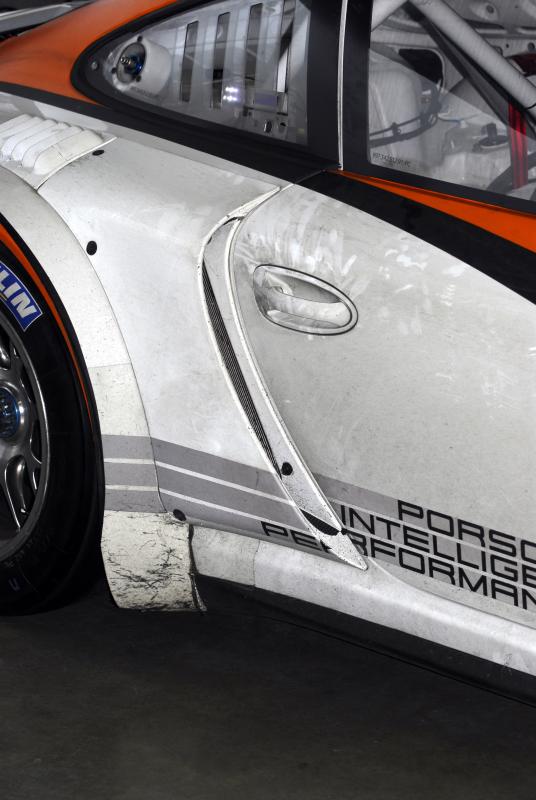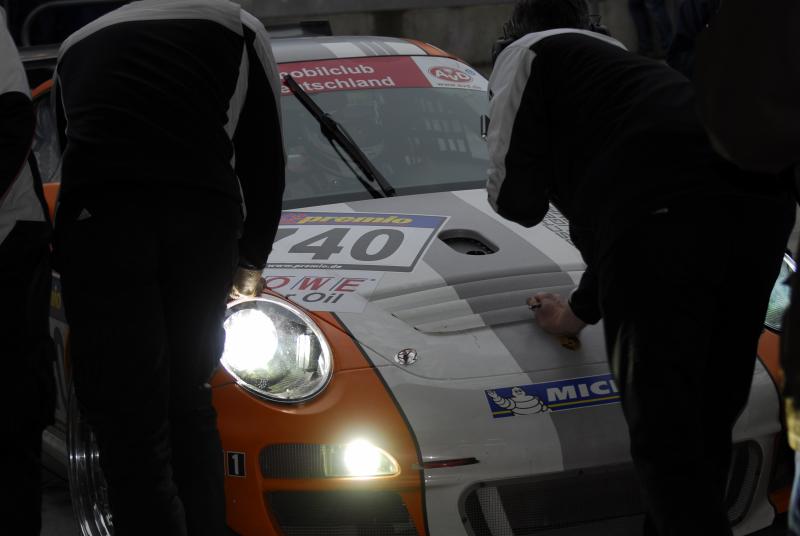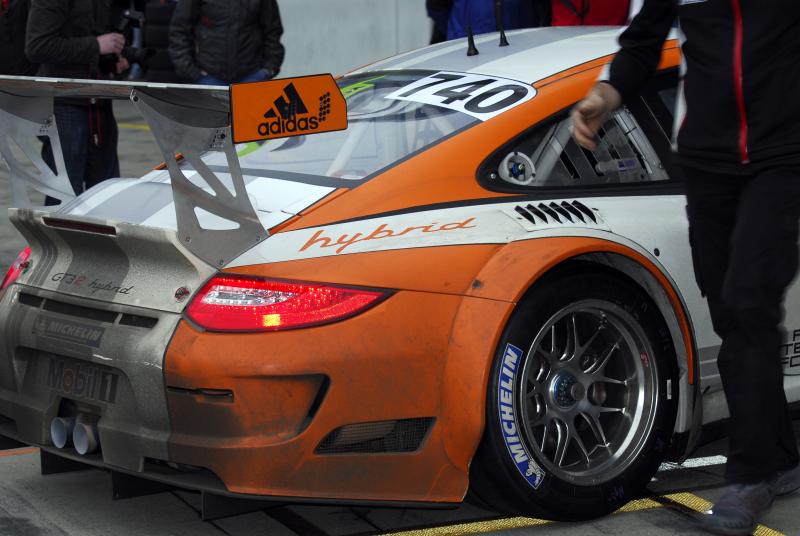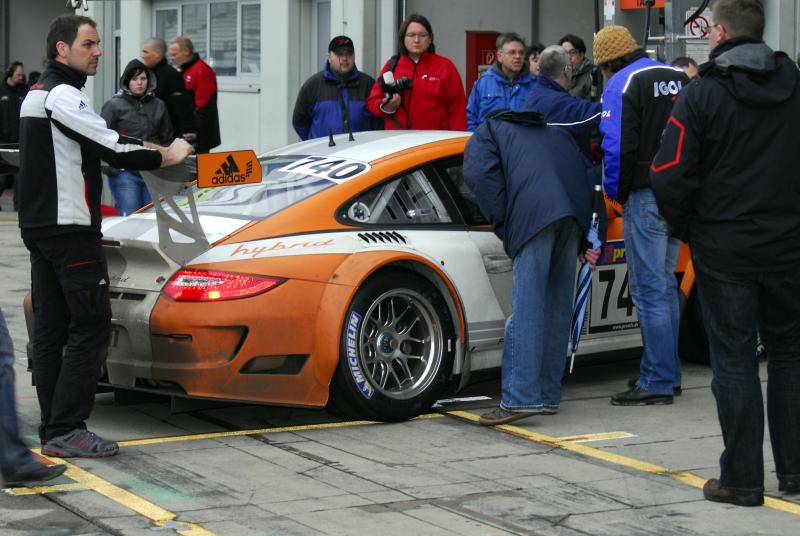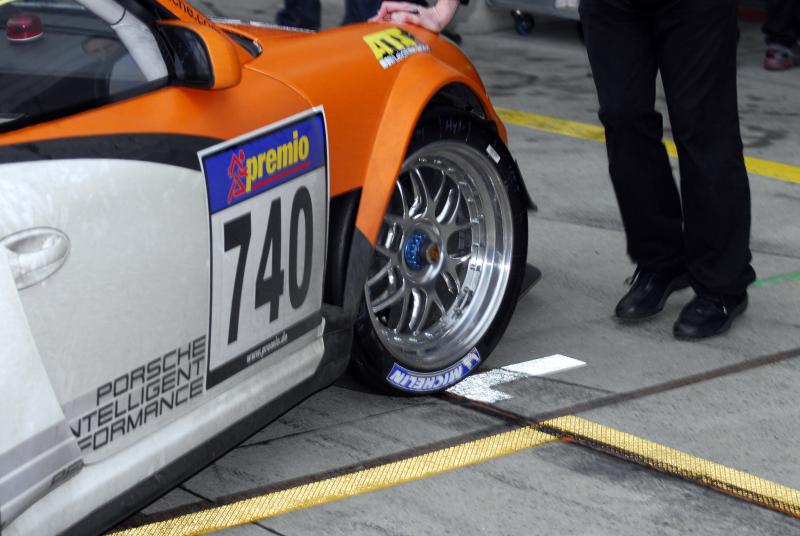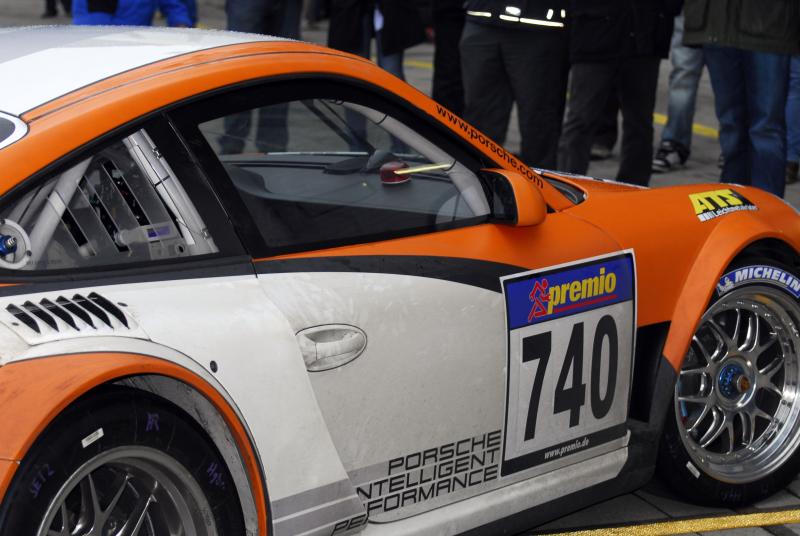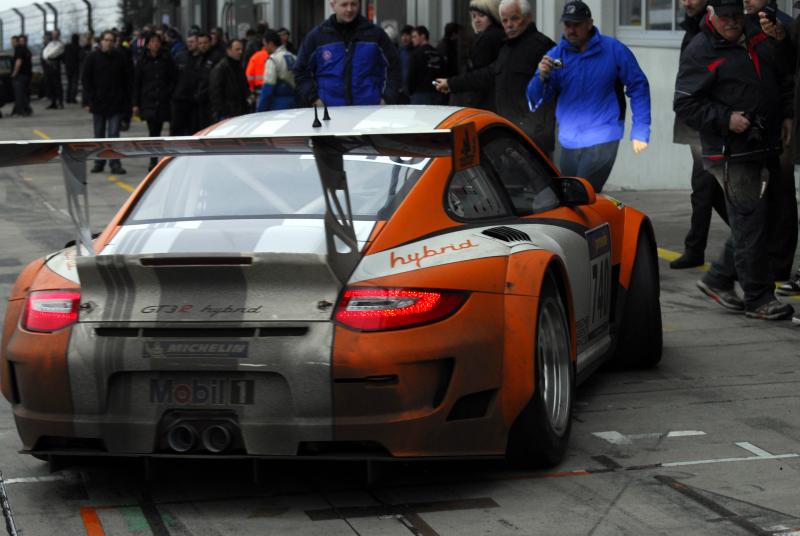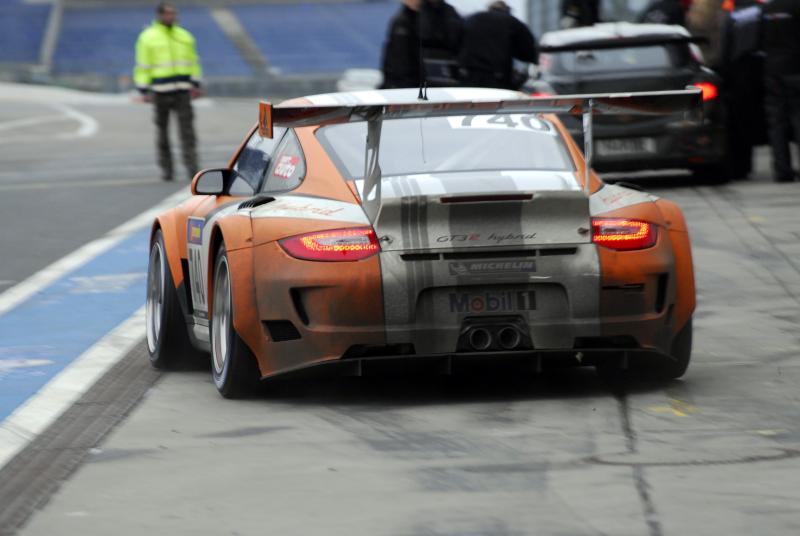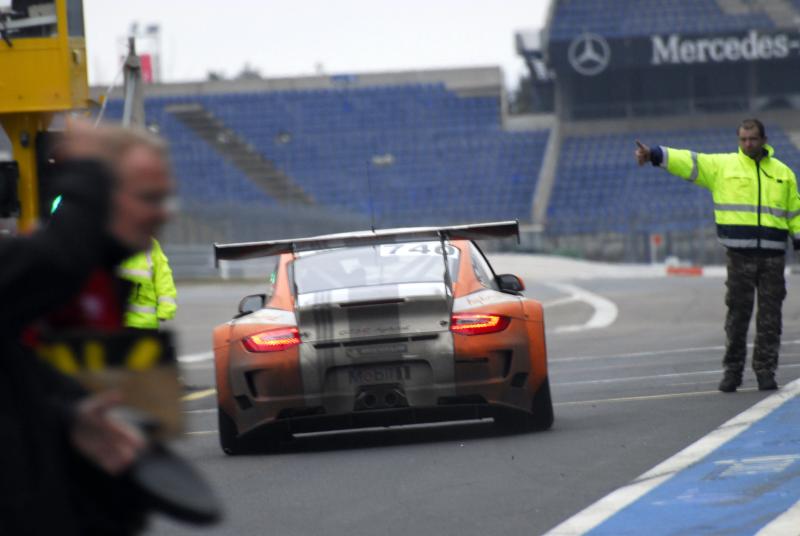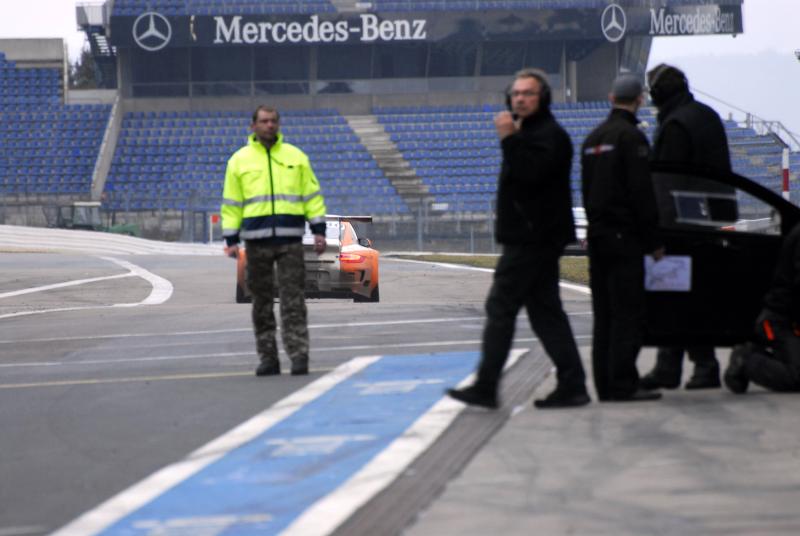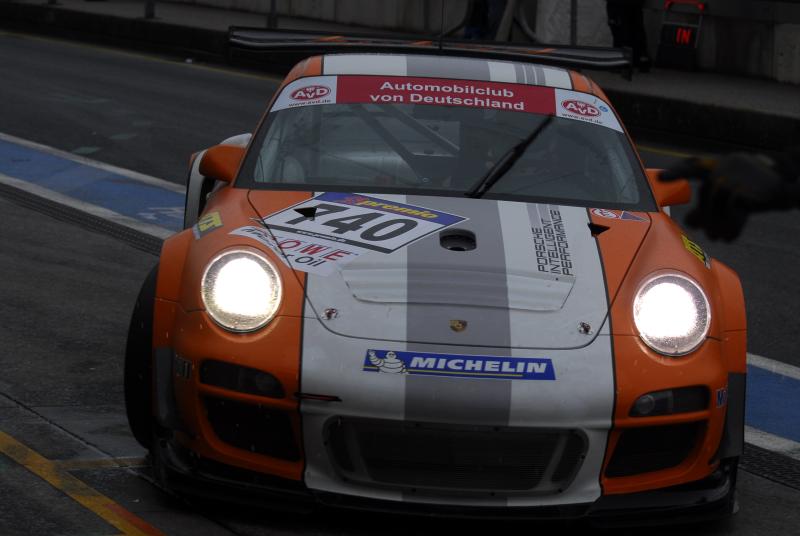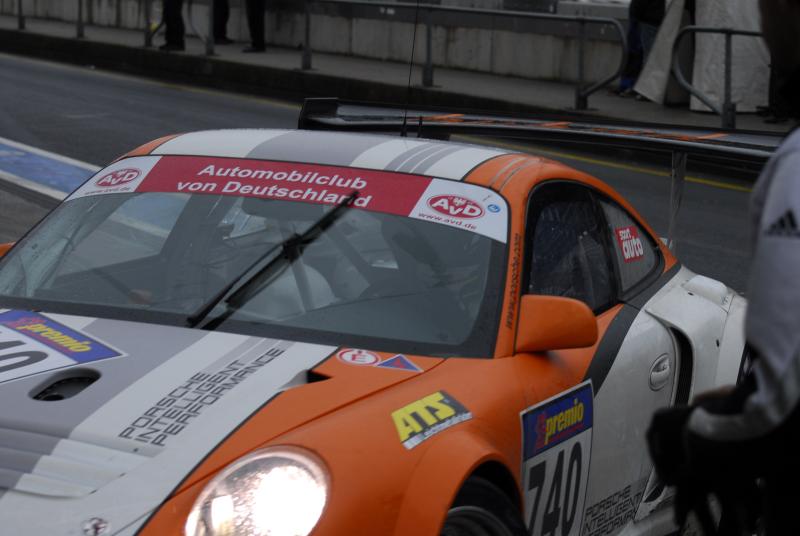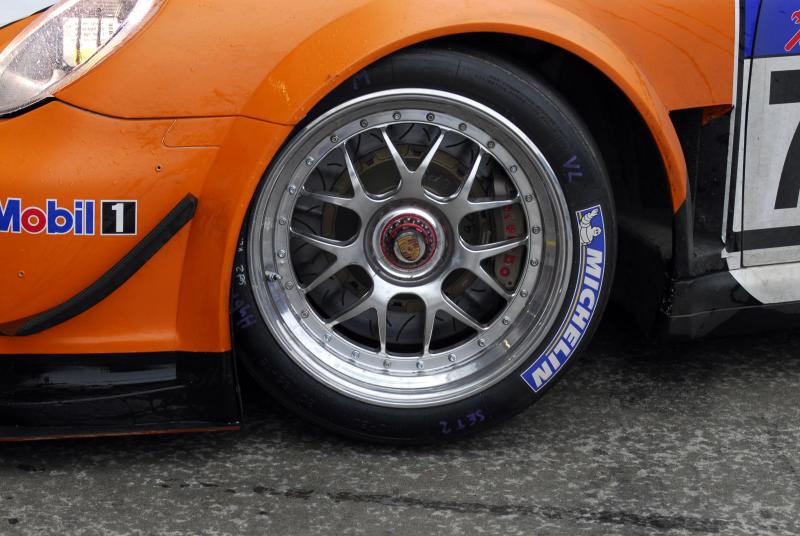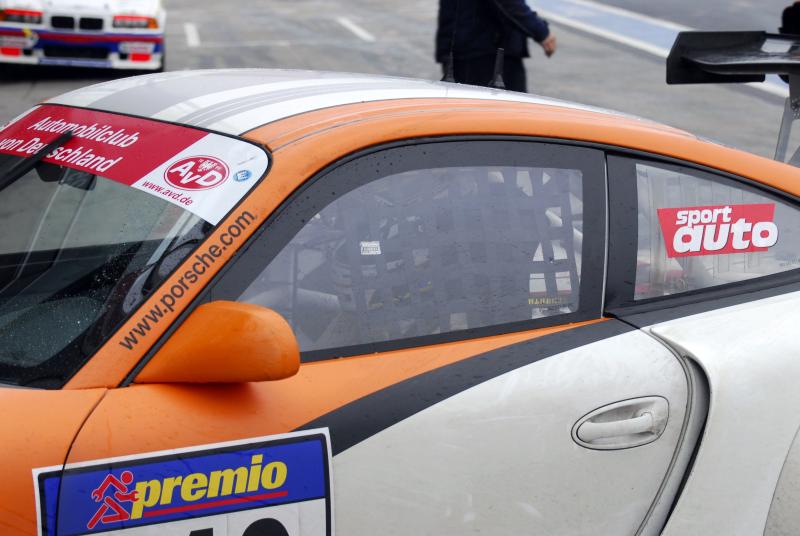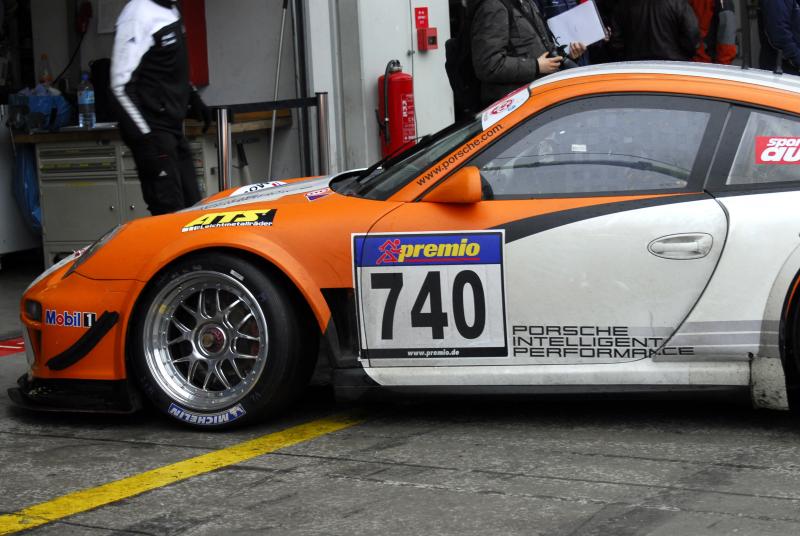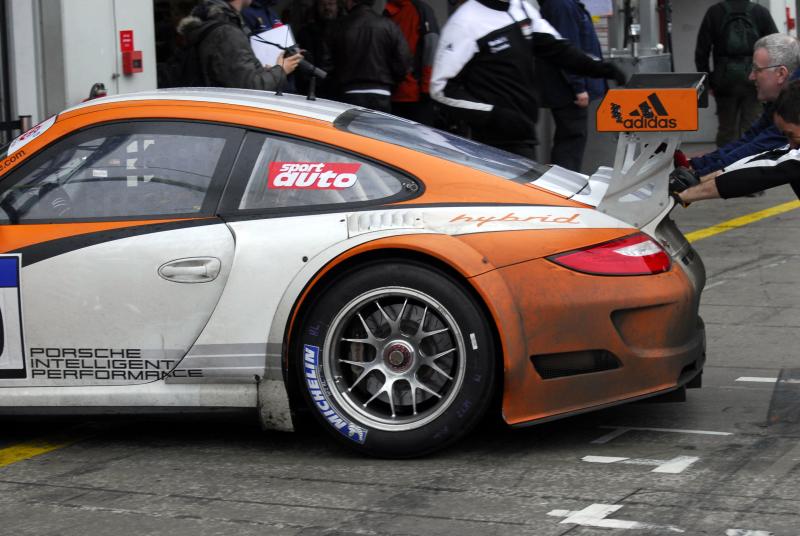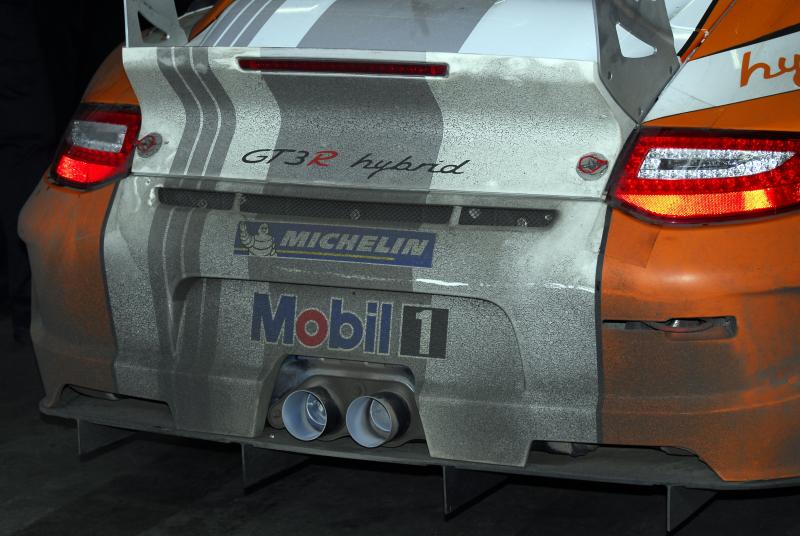911 GT3 R Hybrid
Discussion
Graham E said:
Could any of you gyroscopically minded people explain what impact a 'scope would have on a car?
i guess you never rode a motorbike!first off its not a massive effect with these size flywheel http://www.flybridsystems.com/FAQ.html
best way for you to understand it (gyroscopic precession) is to get a bicycle front wheel. hold the wheel upright by the axle. obviously if you let go on one side the wheel will fall. now spin the wheel. you can let go on one side and it won't fall. it will start to rotate around your finger, depending which way you spin it. the gravitational force that you expect to make it fall acts on the wheel 90 degrees around the axis. now spin the wheel flat and apply a rolling force to it as if you were in a cornering car. the wheel will try and pitch back or forwards not sideways. its very strange and you have to feel it to believe it but it will make more sense than reading about it on t'internet.

in a car the effect of a rigid mounted clockwise spinning flywheel (from above) under braking would try to make the car lean right. turning left, rolling right would pitch the car backwards. under acceleration the flywheel would try to roll the car left. and turning right, rolling left the flywheel would pitch the car forward. weird. i dont know how noticable it would be.
Edited by fbrs on Tuesday 16th February 20:02
Hi All
The flywheel could also be sped up on the green flag lap offering a more than healthy boost off the grid, especially as it will not overload the rear tyres, giving fantastic electric motor torque from 0 rpm to the front wheels.
These flywheels, being wound from composite fibre do not explode but simply unravel like line on a fishing reel.
The problems with batteries is the recharging rate, battery life and overheating, solvable with F1 money but not GT and everyday cash. These modern Lithium batteries will certainly last longer if charged and discharged within certain limits rather than being completely discharged and recharged.
Ultra capacitors (which for instance can store the charge in a lightning bolt) currently have problems with letting that power out in a usefully controlled manner.
Hope this helps
Best regards
Martin A
The flywheel could also be sped up on the green flag lap offering a more than healthy boost off the grid, especially as it will not overload the rear tyres, giving fantastic electric motor torque from 0 rpm to the front wheels.
These flywheels, being wound from composite fibre do not explode but simply unravel like line on a fishing reel.
The problems with batteries is the recharging rate, battery life and overheating, solvable with F1 money but not GT and everyday cash. These modern Lithium batteries will certainly last longer if charged and discharged within certain limits rather than being completely discharged and recharged.
Ultra capacitors (which for instance can store the charge in a lightning bolt) currently have problems with letting that power out in a usefully controlled manner.
Hope this helps
Best regards
Martin A
I think talk of Lithium batteries not lasting is down to people not understanding the technology. Li-Ion batteries don't suffer due to charge/discharge cycles. What they suffer from is a gradual decay of their capacity over time, a bit like a radioactive half-life. Something like 50% in 5yrs for some decent ones, but it depends on a lot of factors, manufacturing quality, actual construction and design etc. They can be a lot worse than that, hence cheap mobile phone batteries that probably only cost £1 to make aren't going to be very good.
In terms of dumping the power back out of super capacitors I can't see how its any different to getting the power back out of a flywheel in a controlled manner, as its the same electrical power levels you're talking about controlling.
The comparison with a flywheel that slows in a nice controlled manner over 2 minutes isnt really a comparison with one that will dump it all in 8seconds, but also in a controlled manner. Thats 15x. Thats like saying I never had a problem with the brakes on my old push bike, so whats wrong with using rubber pads pushed onto the wheel rims to stop my Porsche from 100mph?
Of course one assumes all this has been thought of and the gyroscopic effects too (I suspect this is the least of their worries), but then teams do push their luck with technology. I'll be watching this with interest.
In terms of dumping the power back out of super capacitors I can't see how its any different to getting the power back out of a flywheel in a controlled manner, as its the same electrical power levels you're talking about controlling.
The comparison with a flywheel that slows in a nice controlled manner over 2 minutes isnt really a comparison with one that will dump it all in 8seconds, but also in a controlled manner. Thats 15x. Thats like saying I never had a problem with the brakes on my old push bike, so whats wrong with using rubber pads pushed onto the wheel rims to stop my Porsche from 100mph?
Of course one assumes all this has been thought of and the gyroscopic effects too (I suspect this is the least of their worries), but then teams do push their luck with technology. I'll be watching this with interest.
Renrut,
Getting the power out gradually is actually pretty simple, assuming that they are using DC motors (which they will be). Assuming a constant load, a DC motor's speed / rate of acceleration is directly related to the power put into the motor - the more power, the faster it goes / accelerates.
You can apply this directly in reverse to create a brake - the more you're taking out of the dynamo, the greater the load is (this is why when ou turn the car lights on with a low battery, the alternator load makes the revs drop, before the ECU raises the idle speed again). Therefore, taking the energy out of the flywheel is pretty easy.
Getting the power out gradually is actually pretty simple, assuming that they are using DC motors (which they will be). Assuming a constant load, a DC motor's speed / rate of acceleration is directly related to the power put into the motor - the more power, the faster it goes / accelerates.
You can apply this directly in reverse to create a brake - the more you're taking out of the dynamo, the greater the load is (this is why when ou turn the car lights on with a low battery, the alternator load makes the revs drop, before the ECU raises the idle speed again). Therefore, taking the energy out of the flywheel is pretty easy.
Hi All
The problem with batteries is not so much getting the power out as getting it in from regenerative braking. Not so much of a problem with a 500kg of batteries in a pure electric car but more so in a hybrid racer where weight is being minimised. It isn't currently viable at sub F1 low budget levels to use batteries as they can't take the energy in quickly enough.
There is no [problem getting the power out of an ultracapacitor, the problem currently is to get it out in a useable form. Although electical power is measured in Volts x Amps, the two aren't always easily interchangeable. Imagine two baskets of fifty apples, quite different to trying to carry fifty baskets each containing two apples.
Hope this helps
Martin A
The problem with batteries is not so much getting the power out as getting it in from regenerative braking. Not so much of a problem with a 500kg of batteries in a pure electric car but more so in a hybrid racer where weight is being minimised. It isn't currently viable at sub F1 low budget levels to use batteries as they can't take the energy in quickly enough.
There is no [problem getting the power out of an ultracapacitor, the problem currently is to get it out in a useable form. Although electical power is measured in Volts x Amps, the two aren't always easily interchangeable. Imagine two baskets of fifty apples, quite different to trying to carry fifty baskets each containing two apples.
Hope this helps
Martin A
Graham E said:
Renrut,
Getting the power out gradually is actually pretty simple, assuming that they are using DC motors (which they will be). Assuming a constant load, a DC motor's speed / rate of acceleration is directly related to the power put into the motor - the more power, the faster it goes / accelerates.
You can apply this directly in reverse to create a brake - the more you're taking out of the dynamo, the greater the load is (this is why when ou turn the car lights on with a low battery, the alternator load makes the revs drop, before the ECU raises the idle speed again). Therefore, taking the energy out of the flywheel is pretty easy.
True enough but I think you're trivialising a lot of power electronics.Getting the power out gradually is actually pretty simple, assuming that they are using DC motors (which they will be). Assuming a constant load, a DC motor's speed / rate of acceleration is directly related to the power put into the motor - the more power, the faster it goes / accelerates.
You can apply this directly in reverse to create a brake - the more you're taking out of the dynamo, the greater the load is (this is why when ou turn the car lights on with a low battery, the alternator load makes the revs drop, before the ECU raises the idle speed again). Therefore, taking the energy out of the flywheel is pretty easy.
now obviously this has all been done before but it won't be 100% efficient so why add the extra complications? More moving parts = more points for failure.
Martin A said:
Hi All
The problem with batteries is not so much getting the power out as getting it in from regenerative braking. Not so much of a problem with a 500kg of batteries in a pure electric car but more so in a hybrid racer where weight is being minimised. It isn't currently viable at sub F1 low budget levels to use batteries as they can't take the energy in quickly enough.
There is no [problem getting the power out of an ultracapacitor, the problem currently is to get it out in a useable form. Although electical power is measured in Volts x Amps, the two aren't always easily interchangeable. Imagine two baskets of fifty apples, quite different to trying to carry fifty baskets each containing two apples.
Hope this helps
Martin A
Now where did I put my eggs... The problem with batteries is not so much getting the power out as getting it in from regenerative braking. Not so much of a problem with a 500kg of batteries in a pure electric car but more so in a hybrid racer where weight is being minimised. It isn't currently viable at sub F1 low budget levels to use batteries as they can't take the energy in quickly enough.
There is no [problem getting the power out of an ultracapacitor, the problem currently is to get it out in a useable form. Although electical power is measured in Volts x Amps, the two aren't always easily interchangeable. Imagine two baskets of fifty apples, quite different to trying to carry fifty baskets each containing two apples.
Hope this helps
Martin A

I agree batteries are probably not the solution in a balls out racer but wasn't the idea that this would be further developed for a road car, otherwise its a very large PR wagon?
A flywheel has analagous energy storage characteristics to a capacitor:
Flywheel
Capacitor
So its power output will decay just like a caps output and in a similar (uncontrollable?) manner. Its leakage current is analagous to friction. The difference is the flywheel has to be converted to electrical power to be usable by the DC motor on the wheels. That conversion is being done by a motor/generator working as a generator. output voltage being proportional to speed and current being proportional to torque. Thats all well and good and can be managed just like a capacitor could be. But why not just gear the flywheel to the wheels, to give it a maximum speed of say 40,000 rpm, and a clutch to engage/disengage it when you want to brake / accelerate?
Horses for courses at the end of the day, I guess it comes down to if you're more comfortable with a plasma cutter or an angle grinder...
renrut said:
why not just gear the flywheel to the wheels, to give it a maximum speed of say 40,000 rpm, and a clutch to engage/disengage it when you want to brake / accelerate?
http://www.flybridsystems.com/F1System.htmlfbrs said:
JonnyVTEC said:
On the Z - axis is will help to control pitching and roll.
i dont think so. when you brake the car will pitch forward and the flywheel will roll the car, left or right depending on rotation. similarly when you corner and the car rolls the flywheel will be trying to pitch the car forward or back. i dont think it 'helps control' handling at all. would be interesting to see what size the forces are if anyone can remeber the maths?Have you never held a bicycle wheel horizontal with your hands on the spindle and tried to tip it forwards?!? There is resistance due to the gyroscopic effect. It wants to remain as it is.
When you corner you roll in a normal car..... the roll wil be resisted by the flywheel = less roll. Im not sure why you are thinking of typical effects on the car and THEN what the flywheel does when in reality the flywheel effects the dynamics of the car.
JonnyVTEC said:
When you brake in a normal car it pitches forward.
Have you never held a bicycle wheel horizontal with your hands on the spindle and tried to tip it forwards?!? There is resistance due to the gyroscopic effect. It wants to remain as it is.
When you corner you roll in a normal car..... the roll wil be resisted by the flywheel = less roll. Im not sure why you are thinking of typical effects on the car and THEN what the flywheel does when in reality the flywheel effects the dynamics of the car.
see my post at the top of this page. you are ignoring gyroscopic precession. i agree in a corner there will be less roll but at the expense of other very weird effectsHave you never held a bicycle wheel horizontal with your hands on the spindle and tried to tip it forwards?!? There is resistance due to the gyroscopic effect. It wants to remain as it is.
When you corner you roll in a normal car..... the roll wil be resisted by the flywheel = less roll. Im not sure why you are thinking of typical effects on the car and THEN what the flywheel does when in reality the flywheel effects the dynamics of the car.
Gassing Station | Porsche General | Top of Page | What's New | My Stuff




